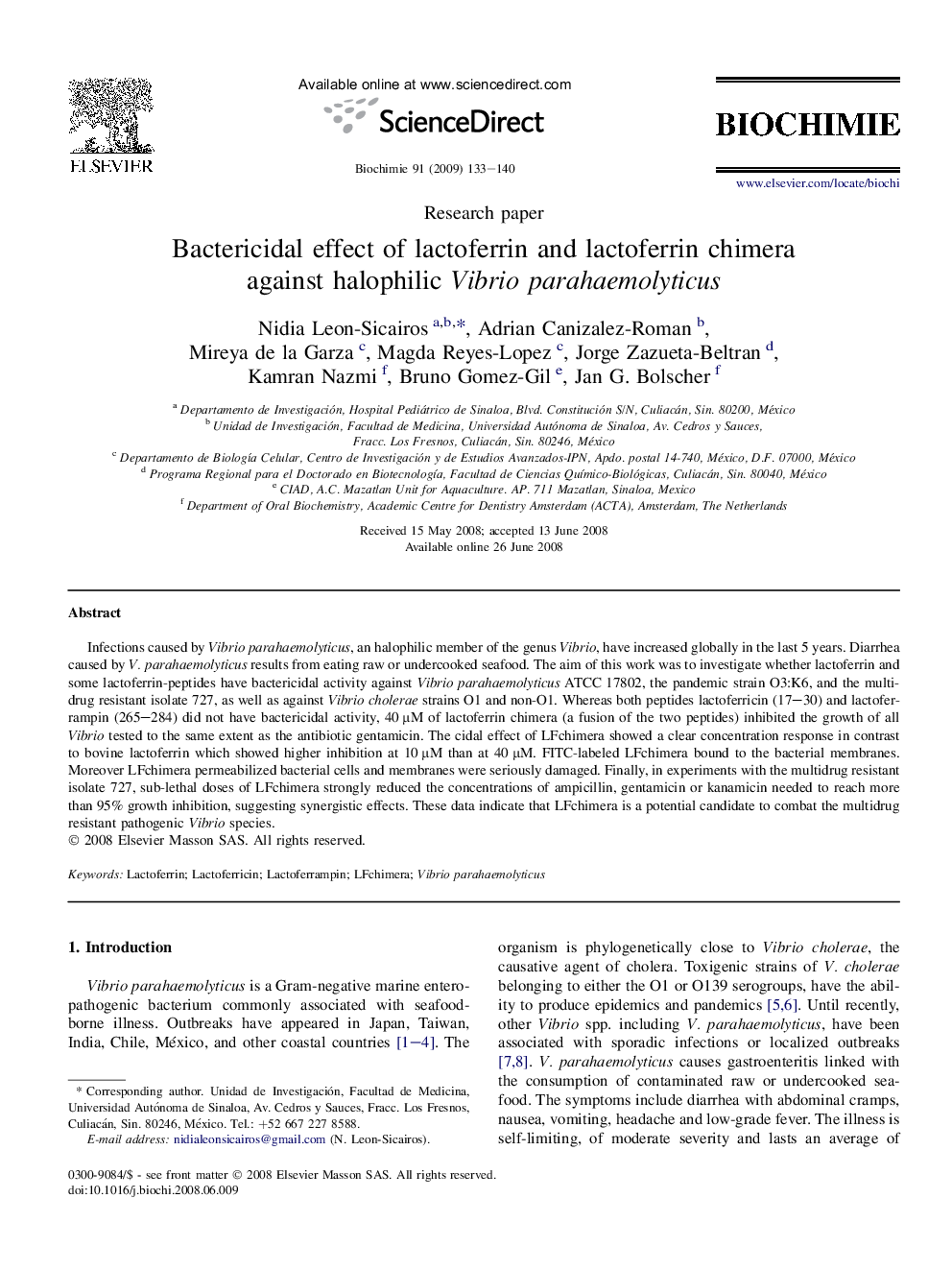| Article ID | Journal | Published Year | Pages | File Type |
|---|---|---|---|---|
| 1952603 | Biochimie | 2009 | 8 Pages |
Infections caused by Vibrio parahaemolyticus, an halophilic member of the genus Vibrio, have increased globally in the last 5 years. Diarrhea caused by V. parahaemolyticus results from eating raw or undercooked seafood. The aim of this work was to investigate whether lactoferrin and some lactoferrin-peptides have bactericidal activity against Vibrio parahaemolyticus ATCC 17802, the pandemic strain O3:K6, and the multidrug resistant isolate 727, as well as against Vibrio cholerae strains O1 and non-O1. Whereas both peptides lactoferricin (17–30) and lactoferrampin (265–284) did not have bactericidal activity, 40 μM of lactoferrin chimera (a fusion of the two peptides) inhibited the growth of all Vibrio tested to the same extent as the antibiotic gentamicin. The cidal effect of LFchimera showed a clear concentration response in contrast to bovine lactoferrin which showed higher inhibition at 10 μM than at 40 μM. FITC-labeled LFchimera bound to the bacterial membranes. Moreover LFchimera permeabilized bacterial cells and membranes were seriously damaged. Finally, in experiments with the multidrug resistant isolate 727, sub-lethal doses of LFchimera strongly reduced the concentrations of ampicillin, gentamicin or kanamicin needed to reach more than 95% growth inhibition, suggesting synergistic effects. These data indicate that LFchimera is a potential candidate to combat the multidrug resistant pathogenic Vibrio species.
